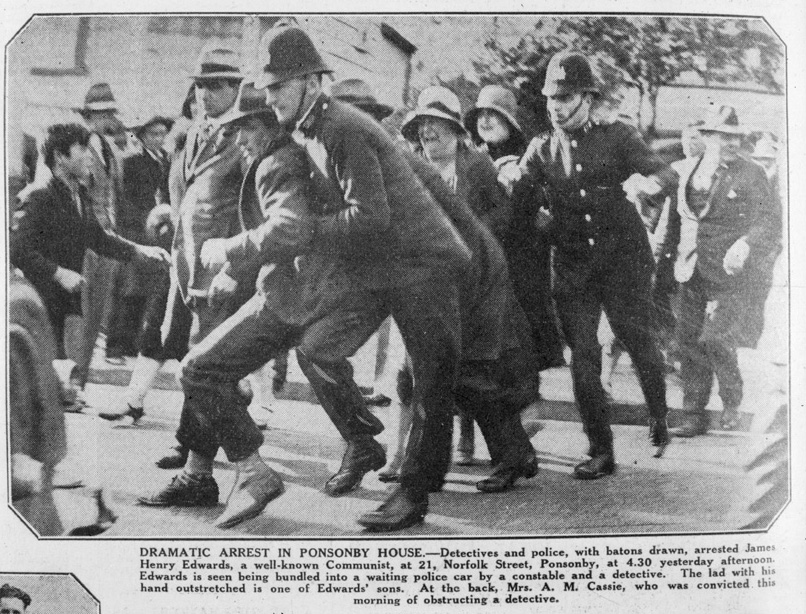Shelly Bay, Miramar Peninsular, Wellington City: a land occupation is heating up. Last Wednesday, a call for support went out; on Thursday, developers stood off against a line of protestors. Arrests have been threatened, but the cops have held off while numbers are strong.
What’s it all about? The management of assets from a treaty settlement. Port Nicholson Block Settlement Trust was formed according to standard settlement terms, notoriously shoddy at providing for democratic asset governance. In 2008, the Trust board bought a tract of land at Shelly Bay from the Crown for 15 million. Eight years later, the board tried to sell the tract, to Ian Cassell’s The Wellington Company. They didn’t get the vote they needed through among the 19,000 trust members; so the sale failed. Months later, they put it through anyway: if the same land was split into four sections sold separately, no vote was required. This is what Mau Whenua and the occupation are opposing.
(For more information, Nicky Hager reporting on the story last year — my interview with Mau Whenua member Shamia Makarini from June — and Serah Allison’s update on the situation at Shelly Bay as of last week.)
To be clear, Mau Whenua is not a left-wing or a workers’ organisation. They stand for a particular policy in relation to this chunk of Trust resources (and probably a particular managing personnel). Beyond this fight, they have raised no programme.
Since 2016, Mau Whenua have been fighting for the Trust’s democratic process. This is the grounds on which we should support their occupation of Shelly Bay: not for the politics of Mau Whenua, but rather for the control of 19,000 Māori corresponding to the legal entity Taranaki Whānui over assets supposedly their own.
This is a small fight. The specific course of the development of Shelly Bay isn’t much substance to accrue weight – much less than, say, the prospect of mana whenua evictions and desecrations of heritage sites at Ihumātao. But, like Ihumātao, it marks out an opening onto a wide field of struggle, scantly travailed for decades: the struggle of the Māori working class.
What is the New Zealand state to the Māori working class? What is the Māori working class in New Zealand society? In working class struggle as a whole? These questions of consciousness, never vanishing, will in the future be raised high again as they were in the 70s and 80s, with one question newly brought to prominence: What is Māori capitalism to the Māori working class? There is no doubt about that. There is no doubt that the land occupations of this period will weave their memory into the pattern of their asking: the flag Tīno Rangatiratanga waving in the wind, ambiguous.
What is in doubt is the balance of answers that will settle from these questions – the programme that is to emerge to strength. We must hope it is a programme for class struggle: against oppression, against discrimination, against privilege; for workers’ emancipation, thus for workers’ seizure of power; for the defeat of the New Zealand state, guardian of the oppression of workers and of the Māori people; for the setting-up of a state which can guard against the restitution of oppression.
The occupation at Shelly Bay needs bodies, money, water, and food – and likely will over a long span. For the democratic rights of Taranaki Whānui members, we should continue to assist in finding them. And above all, we should put forward the programme that raised in struggle, in the future, may secure the rights of Māori which have been attacked by our colonial state for a hundred and fifty years. That, in the last analysis, must be our usefulness: laying seeds, memories, building forces, for the struggles which are to come — for a future which may be better than the past.








